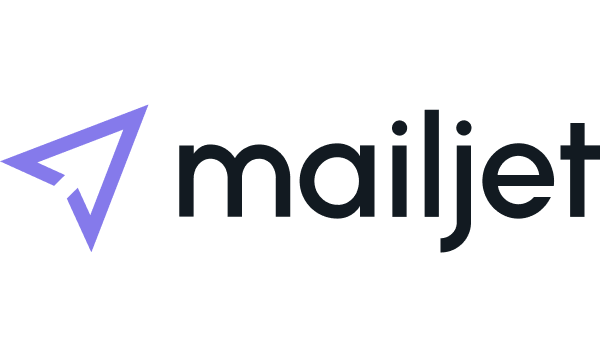- Premium features included
- No hidden costs or usage limits
- Scale from startup to enterprise



Picking the right email platform can seriously impact how well you connect with your audience and grow your business. Trust me — I’ve learned this the hard way after trying countless options over the years.
Two names that keep coming up in conversations are Mailgun and Mailjet. They’re both solid choices, but they definitely serve different needs.
Mailgun has built its reputation on robust API functionality and developer-friendly features — it’s the go-to for companies sending tons of emails or needing advanced transactional capabilities.
Mailjet takes a different approach with its user-friendly interface and great collaboration tools, making it perfect for smaller teams focused on creating and managing email campaigns without needing a developer on standby.
I’ve worked with both platforms extensively and want to share my thoughts on how they compare when it comes to pricing (because let’s be real, budget matters), features, ease of use, and overall performance.
By the end, you should have a much clearer picture of which one makes more sense for your specific email marketing needs.
Mailgun
Mailjet
Best For
Developers, high-volume email senders, transactional emails
Small to mid-sized businesses, marketing teams
Pricing
Pay-as-you-go model, from $15/month
Free plan + paid plans from $15/month
Ease of Use
Developer-focused, requires more technical setup
Simple, user-friendly interface for teams
Value for Money
Great for high-volume, transactional emails
Affordable for basic email marketing, good collaboration tools
Overall Strengths
Overall Weaknesses
Mailgun
Mailjet
Mailgun
Mailjet
Email Campaigns
Automation
Landing Pages & Forms
Segmentation & Personalization
Reporting & Analytics
Integrations
If you’re running a business with serious email volume — especially transactional messages — Mailgun makes a lot of sense. Their robust API and deliverability rates are impressive, and their real-time analytics give you the insights needed to optimize performance.
But I won’t sugarcoat it — this isn’t the platform for marketing teams without technical support. The learning curve can be steep, and you’ll likely need developer resources to get the most out of it.
I’ve worked with clients who love Mailgun’s flexibility and reliability for sending thousands of emails daily, but smaller teams often find it overwhelming.
Mailjet works beautifully for small to mid-sized businesses that need a straightforward, affordable platform for their email marketing. What really stands out is how quickly non-technical team members can create professional-looking campaigns with their intuitive editor.
The collaboration features are genuinely useful — multiple people can work on the same email simultaneously without chaos ensuing. While it doesn’t have the advanced API capabilities or transactional email features that Mailgun offers, its simplicity is actually its strength.
I’ve recommended Mailjet to several clients who needed an easy-to-use solution their whole team could manage.
Subscriber Count
Mailgun Pricing (Email API)
Mailjet Pricing (Premium Plan)
Key Differences
1,000
From $15/month (Pay-as-you-go model)
From $15/month
Mailgun charges based on email volume; Mailjet offers flat-rate pricing.
2,500
From $25/month (Pay-as-you-go model)
From $25/month
Mailjet includes unlimited contacts; Mailgun is more flexible with volume.
5,000
From $45/month
From $35/month
Mailgun offers email API-focused services; Mailjet provides more marketing features.
10,000
From $70/month
From $55/month
Mailgun pricing scales with usage; Mailjet offers easier setup for marketers.
25,000
From $150/month
From $125/month
Mailjet better suited for teams; Mailgun supports high-volume transactional emails.
Mailgun’s flexible pay-as-you-go model can be perfect if your email volume fluctuates month to month. It’s often cost-effective for high-volume senders who need the technical capabilities, but watch out — costs can climb quickly as your usage increases.
I’ve seen clients get surprised by their bills during high-volume months.
Mailjet’s flat-rate structure makes budgeting more predictable, which is why many marketing teams prefer it. You know exactly what you’ll pay each month regardless of how many emails you send (within your plan’s limits).
For businesses that want to avoid surprises and keep costs controlled as they grow their list, this approach makes planning easier.
Mailgun Free Plan
Mailjet Free Plan
Subscribers
Up to 5,000 emails/month
Unlimited contacts
Emails/Month
5,000 emails/month
6,000 emails/month (200/day limit)
Automation
No automation available
Basic automation available
Landing Pages/Forms
No landing page builder
Signup forms only
Branding
Mailgun branding on emails
Mailjet branding on emails
Mailgun’s free plan is pretty limited — you get 5,000 emails monthly with no automation features. It’s really designed for developers who want to test the platform’s API and deliverability before committing. I wouldn’t recommend it for actual marketing campaigns.
Mailjet offers a more generous free option with 6,000 monthly emails, unlimited contacts, and even some basic automation tools. The daily limit of 200 emails is restrictive, but it’s actually usable for small businesses just starting out with email marketing.
I’ve had clients successfully use this free plan while they’re building their list and figuring out their email strategy.
Mailgun
Mailjet
Mailgun makes the most sense if you’re sending high volumes of emails, particularly transactional ones like order confirmations or password resets.
Its pay-as-you-go model offers flexibility for businesses with variable sending needs, and its robust API is perfect for developers who want to customize their email functionality. I’ve found it works particularly well for ecommerce businesses, SaaS companies, and organizations with dedicated technical resources.
Just be prepared for a steeper learning curve and potentially higher costs as you scale.
Mailjet is the better choice for small to mid-sized businesses and marketing teams looking for an affordable, easy-to-use platform. If your team needs to collaborate on email design and doesn’t have developer resources, you’ll appreciate Mailjet’s intuitive interface and team-friendly features.
It’s ideal for companies focused on newsletters, basic marketing campaigns, and building subscriber relationships without technical complexity. The flat-rate pricing also makes it easier to budget for as you grow.
Mailgun users consistently praise its developer-friendly approach and API flexibility. If you’ve got technical knowledge, you’ll likely find it intuitive for integration and transactional emails.
That said, I’ve heard from marketing teams who felt lost trying to navigate the platform without developer support. One client told me: “It’s perfect for our dev team, but our marketers couldn’t figure it out.”
Mailjet gets high marks for its accessible interface and collaborative tools. Users frequently mention how quickly they can create campaigns without needing technical expertise.
I’ve had several clients comment on how their entire team — from interns to CMOs — can use the platform effectively with minimal training.
Let’s be honest — Mailgun has a steeper learning curve due to its API-first approach. If you don’t have a technical background, expect to spend some time getting comfortable with the platform.
Most users report needing at least a few weeks to fully understand all its capabilities. The flip side? Once you master it, the possibilities are extensive.
Mailjet is considerably easier to pick up, especially for marketing professionals. Most users feel comfortable creating basic campaigns within a day or two, though exploring some of the more advanced features might take longer.
The platform prioritizes accessibility over technical depth, which shows in how quickly teams can adopt it.
Mailgun users frequently praise its reliability and deliverability. One review I saw recently summed it up well: “We send over 100,000 transactional emails monthly, and Mailgun handles it flawlessly.”
The most common complaints revolve around pricing as volume increases and the technical knowledge required.
Mailjet users love the affordability and ease of use. As one reviewer put it: “It’s refreshingly simple to use compared to other platforms we tried.” The main criticisms focus on the limited advanced features and automation capabilities compared to premium alternatives.
In the end, your choice should come down to your specific needs — are you a developer-heavy organization sending transactional emails, or a marketing team focusing on campaigns and newsletters? There’s no universal right answer, just the right tool for your particular situation.
